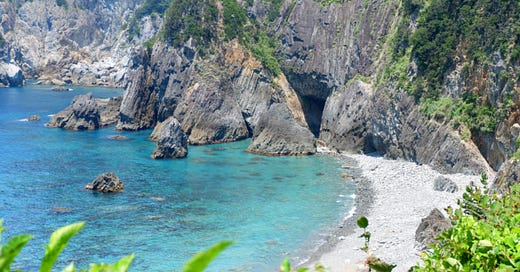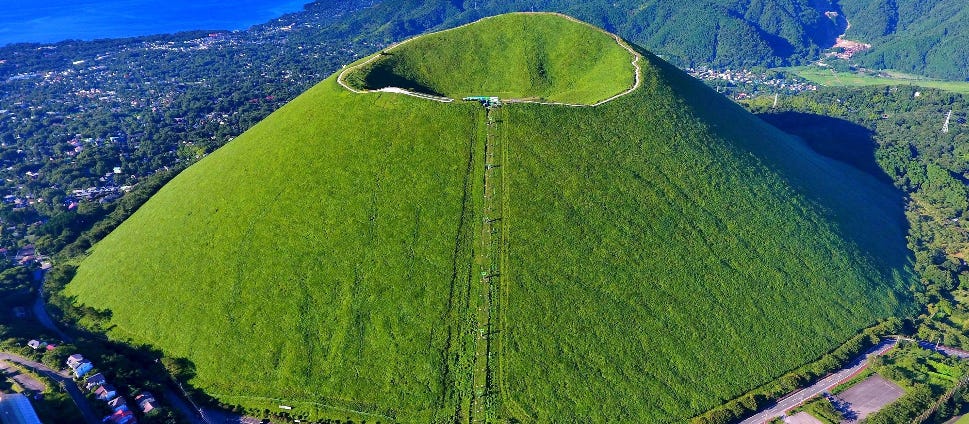Izu Peninsula Spotlight: Tokyo’s Closest Affordable Escape
Surfing, beaches, proximity to Tokyo all at a good price
An area I’ve been focusing on a lot lately is the Izu Peninsula. From a real estate perspective, it’s a really interesting region that’s seems to be flying under the radar of a lot of foreigners buyers. First off, the location is incredibly convenient. You can go from central Tokyo mayhem to the quiet beaches of Izu in under two hours.
Some of the villages on the northeastern side are within an hour and 50 minutes by Shinkansen, making it one of the most accessible and importantly affordable, “weekend getaway” regions in the country. People who are looking for homes in Zushi are surprised to see homes in the 6-figure range so I often steer them here.
And despite that proximity to the greatest city on the planet (yes bold statement I know), Izu still offers shockingly affordable real estate. I’ve personally seen homes in great shape, recently renovated, with modern utilities, going for as low as $17,000 USD.
That’s less than a used car for a beach-adjacent property in Japan. Many of the homes were built during Japan’s bubble era of the late 1980s and early '90s, so the housing stock is often newer and better maintained than what you’ll find in many rural towns further north or inland.
The Izu Peninsula feels different from the rest of Japan and not just culturally, but geologically. It has a subtropical, jungle-like feeling, with dramatic coastlines, miles of mountain hiking trails and thick forests. From a geological perspective, it is very different than the rest of Japan.
The peninsula only joined up with the main island of Honshu about 600,000 years ago. In geologic terms, that’s yesterday. Izu was once part of the Philippine Sea Plate, a rogue volcanic island arc similar to Hawaii.
Because of its rare geological features, the area has been designated a UNESCO Global Geopark, meaning it’s subject to stricter environmental protections. That’s great news for buyers, it means the overdevelopment people feared was coming in the bubble era is unlikely, and the area’s natural beauty is being actively preserved. Which means protected coastlines, limited construction in sensitive areas, and an emphasis on sustainable tourism.
A lot of the homes here were part of "resort community" developments from the 1980s and ‘90s. These communities often come with small monthly maintenance fees, usually around $1,000 USD per year. Combined with property taxes, you’re looking at only $1,600–$1,800 annually to maintain a vacation property. And those fees often grant you access to some surprisingly luxe amenities like onsens, seasonal pools, tennis courts, and communal recreation areas.
If you’re considering a vacation home that feels far-flung but remains close to Tokyo, Shimoda is a standout. Shimoda sits on the southeastern tip of the peninsula and played a key role in Japanese history. In 1853, American Commodore Matthew Perry landed here demanding that Japan open to trade after more than 200 years of self-imposed isolation.
You can still walk along Perry Road, a charming, cobblestone-lined canal street with preserved Meiji-era architecture, cafes, and boutiques. There's a museum at Ryosen-ji Temple, where the treaty was negotiated, and another at Gyokusen-ji Temple, the consulate’s first location. Like much of the Izu peninsula, Shimoda beaches are some of the best in Japan, with some decent surf in typhoon season, turquoise waters, and soft white sand.
While the eastern coast (Shimoda, Ito, Atami) is more developed and offers better amenities and infrastructure, the western side of Izu is more rugged, less developed in terms of infrastructure and towns. On clear days, you can see Mount Fuji looming across the bay especially at golden hour when the snowcapped peak glows orange against the Pacific.
Towns like Matsuzaki and Dogashima offer a much quieter lifestyle. Here, you’ll find dramatic coastal rock formations, sea caves, and a slower pace of life. It’s perfect for people who want a little slice of untouched Japan, and prices here tend to be even lower than on the east coast (although is hard to get much lower than 17,000).
The Izu Peninsula is one of those rare places that check all the boxes: it’s affordable, accessible, and absolutely stunning. Whether you’re a surfer, beach lover, hiker or just someone looking for a peaceful retreat close to Tokyo, it delivers. Add in the strong infrastructure, rich cultural history, hot springs, and low cost of ownership, and it’s easy to see why this region is attracting more attention.
If you’re looking to buy a home in Japan that feels worlds away without being hard to get to, Izu deserves a serious look.
Don’t forget about the Referral Program!
Share any of our newsletters—get us 5 new subscribers—and you’ll score a custom Yuki Homes heavyweight tee, screen printed in Brooklyn and designed by our insanely talented friend Erick.
Not some cheap heat-press junk. We're talking real quality, real style.
Start sharing. Start earning. Start looking good.
Serious about buying a home in Japan—especially in Hokkaido?
Subscribe to our exclusive paid blog and get insider access to Japan’s most promising real estate opportunities. Each month, we send you 10 top property picks, complete with:
ROI potential breakdowns
Estimated renovation costs
Proximity to ski resorts, amenities, and transport
Personalized Q&A access, ask us anything about the listings or the Japan market






